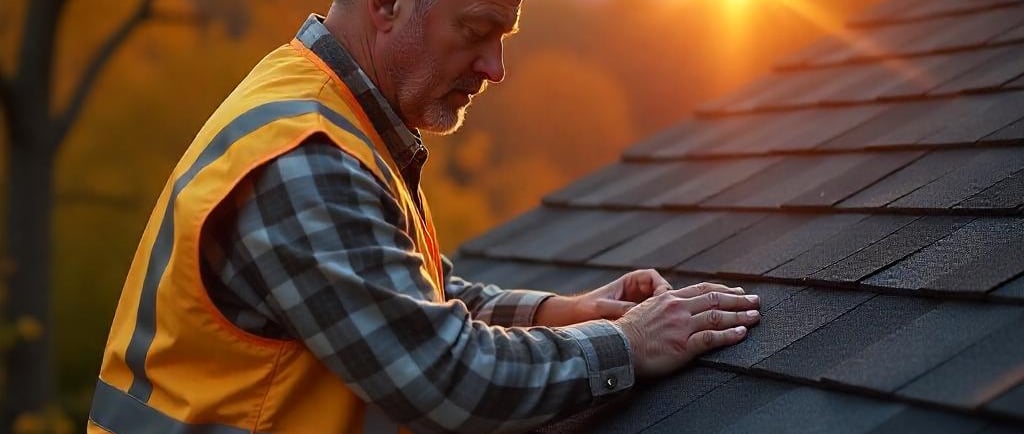Choosing the Right Materials for Your Roof Installation
Learn how to select the best roofing materials for your installation. Discover options, benefits, and tips to ensure a durable, weather-resistant roof.
ROOFING
5/15/20253 min read


When it comes to installing a new roof, selecting the right materials is one of the most important decisions homeowners can make. The materials you choose not only affect the look of your home but also its durability, energy efficiency, and maintenance needs. With so many options available, it can be overwhelming to know where to start. This guide will help you understand the key roofing materials, their pros and cons, and how to choose the best fit for your home and budget.
Why the Right Roofing Material Matters
Your roof is your home’s first line of defense against weather elements like rain, wind, snow, and sun. A well-chosen material ensures protection, energy savings, and adds value to your property. On the flip side, the wrong choice can lead to frequent repairs, higher energy bills, and even structural damage over time.
Popular Roofing Materials: Pros and Cons
Here’s a breakdown of the most common roofing materials used today:
1. Asphalt Shingles
Pros:
Affordable and widely available
Easy to install and repair
Variety of colors and styles
Cons:
Lifespan of 15-30 years (shorter compared to other materials)
Less environmentally friendly
Can be damaged by extreme weather over time
Best for: Homeowners looking for a budget-friendly, versatile roofing option.
2. Metal Roofing
Pros:
Extremely durable and long-lasting (40-70 years)
Reflects sunlight, improving energy efficiency
Lightweight and resistant to fire and pests
Cons:
Higher upfront cost
Can be noisy during rain or hail unless properly insulated
Best for: Those wanting a low-maintenance roof with a modern look and energy-saving benefits.
3. Wood Shingles and Shakes
Pros:
Natural and aesthetically pleasing
Provides good insulation
Cons:
Requires regular maintenance to prevent rot and insect damage
Not fire-resistant (unless treated)
Shorter lifespan (about 20-40 years)
Best for: Homes in dry climates or homeowners who prefer a rustic, traditional appearance.
4. Slate Roofing
Pros:
Extremely durable (up to 100 years or more)
Elegant and natural stone look
Fire-resistant and environmentally friendly
Cons:
Very heavy and requires strong roof framing
Expensive and complex to install
Limited color options
Best for: Luxury homes or historic properties where longevity and aesthetics are priorities.
5. Clay and Concrete Tiles
Pros:
Long lifespan (50+ years)
Excellent resistance to fire and harsh weather
Unique architectural appeal
Cons:
Heavy, requiring reinforced roof structure
Higher installation costs
Can be fragile if walked on improperly
Best for: Homes in hot climates or Mediterranean-style architecture.
Factors to Consider When Choosing Roofing Materials
Climate and Weather Conditions
If you live in an area with heavy snowfall or high winds, you’ll want materials known for durability and weather resistance, like metal or slate. Hot climates benefit from reflective materials that reduce cooling costs.
Budget
While asphalt shingles are economical upfront, some longer-lasting materials like metal or slate may save money over time by reducing repairs and replacements.
Aesthetics and Home Style
Your roof should complement your home’s architecture. For example, clay tiles suit Spanish-style homes, while asphalt shingles are versatile for many styles.
Maintenance
Consider how much upkeep you’re willing to do. Some materials require regular inspections and treatments, while others are virtually maintenance-free.
Local Building Codes and HOA Rules
Always check your area’s regulations. Some neighborhoods or municipalities have restrictions on roofing materials or colors.
Working with Your Roofing Contractor
A professional roofing contractor can provide valuable insights based on your home’s structure, location, and your preferences. They can also help ensure your roof is installed correctly and in compliance with local codes.
Conclusion
Choosing the right materials for your roof installation is a decision that affects your home’s safety, energy efficiency, and curb appeal for years to come. By understanding the pros and cons of each material, considering your local climate, budget, and style, you can make an informed choice that protects your investment and enhances your home.
If you’re ready to explore roofing options tailored to your needs, consult a trusted local roofing contractor who can guide you through the process and provide expert recommendations.
Related Post:
Frequently asked questions
1. What is the most durable roofing material?
Slate and metal roofing are among the most durable options, often lasting 50 years or more with proper maintenance.
2. Which roofing material is best for hot climates?
Clay tiles and metal roofing are excellent for hot climates because they reflect sunlight and help keep homes cooler.
3. Are asphalt shingles a good choice for roof installation?
Yes, asphalt shingles are affordable, versatile, and widely used, but they typically have a shorter lifespan compared to materials like metal or slate.
4. How important is the roof material for energy efficiency?
Very important! Reflective materials like metal can reduce cooling costs by reflecting sunlight, improving your home’s energy efficiency.
5. Can I install roofing materials myself?
Roof installation is complex and can be dangerous. It’s best to hire a professional roofing contractor to ensure safety and quality workmanship.
6. Do roofing materials require maintenance?
Some materials, like wood shingles, need regular maintenance, while others like metal and slate are low-maintenance.
7. How do I choose the right roofing material for my home style?
Consider your home’s architectural style and neighborhood guidelines. For example, clay tiles suit Mediterranean-style homes, while asphalt shingles work well for most others.
All Season Roofs is a trusted roofing company serving New Jersey with expert residential and commercial roofing services. From installations and repairs to inspections and emergency services, we provide durable, high-quality solutions designed to protect your property through every season.
Contact
Mikee@roofingservicesxyz.com
© 2025. All rights reserved.
Business hours:
Monday to Friday
9am to 5pm


Services
